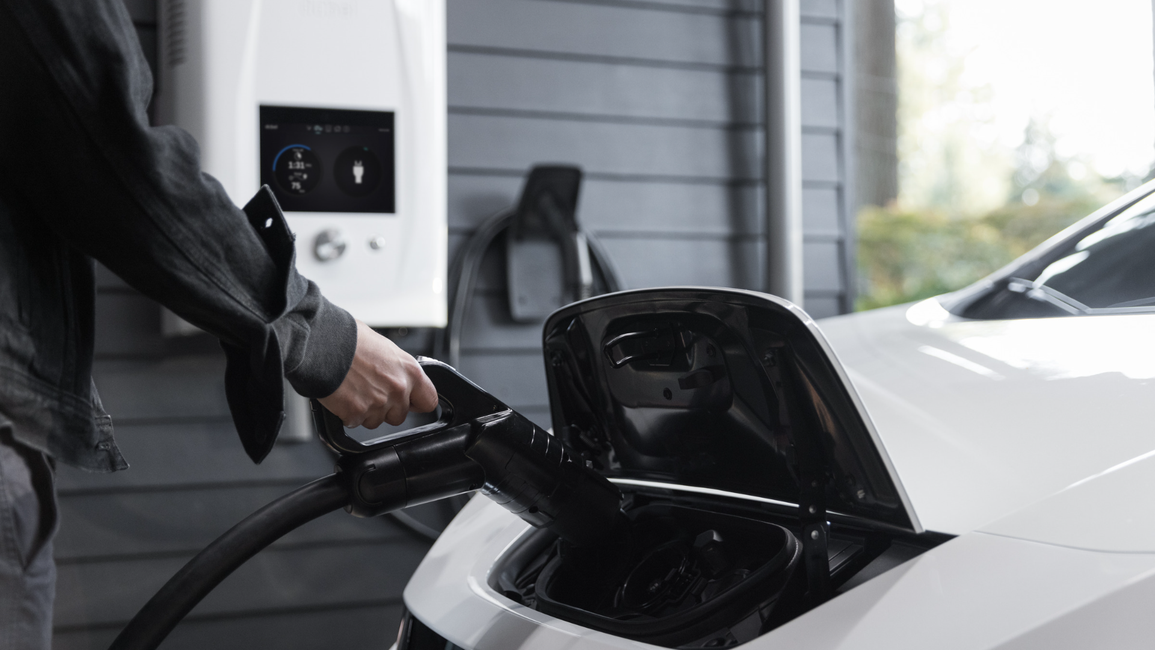
«V2G = Vehicle to Grid» describes the backfeeding of electricity by electric cars into the grid which opens-up new opportunities for energy suppliers and requires an intelligent system for load management.
Charging e-cars at public or private stations is standard today. However, backfeeding is only possible in pilot plants, so the electricity not consumed by driving remains in the battery. Only with the possibility of feeding electricity back into the grid will it be possible to exploit the full potential of batteries in the future.
From direct current to alternating current: How does it work?
The power grid supplies alternating current, which is converted to direct current used to charge e-cars. In order to feed electricity back into the grid, the opposite must take place. In bidirectional chargers, appropriate converters are built in to ensure the current can flow in both directions.
V2G for improved load management
On average, cars are not used for 23 hours a day. Which is more than enough time, to charge electric cars with grid power or surplus solar power and feed it back when needed.
The greater the number of e-cars interacting in the utility’s distribution grid, the greater the benefit to secure energy supply. Fluctuations due to irregularly feeding plants (solar/wind) as well as bottlenecks at peak times can be cushioned with a swarm of vehicle batteries and intelligent load management.
A flexible tariff system for energy and grid usage can be used to create financial incentives. Meaning the demand in the grid sets the price, and the charging and discharging of the batteries of e-cars follows at the right time in each case.
In addition "vehicle to home" (V2H), the backfeeding of electricity from e-cars into the home network, can help to optimize the load management of the energy supplier.
For the time being only a few Asian vehicles are equipped for bidirectional charging (as per regulation in Japan). But the development is progressing rapidly and several vehicle manufacturers have announced the launch of the feature for the near future. Another prerequisite is the availability of suitable charging stations.
Accompanying you into the future
V2G therefore has great potential for utilities and helps them to:
- Close power gaps
- Increase grid stability
- Minimize network expansions
- distinguish themselves in the market as progressive providers
At present, the expansion of the charging infrastructure with suitable charging stations, the monitoring and management of charging processes, and the implementation of large-scale solutions are still challenging.
In addition the Swiss power grids must be quickly upgraded to "smart grids": the previous motto for grid upgrades "more copper" will evolve to "more intelligence and control options" in the medium term.
Together, we take a look into the future, provide the basis for your business decisions, offer turnkey solutions and products as well as technical support during implementation. These include charging stations for bidirectional charging, manufacturer-independent load management, operation and billing of private and public charging infrastructures, and e-mobility services (roaming).

I look forward to answering your questions about bidirectional charging.
Call me or write me an e-mail. I look forward to hearing from you!
+41 79 543 32 00
alexander.wirth@mybn.ch